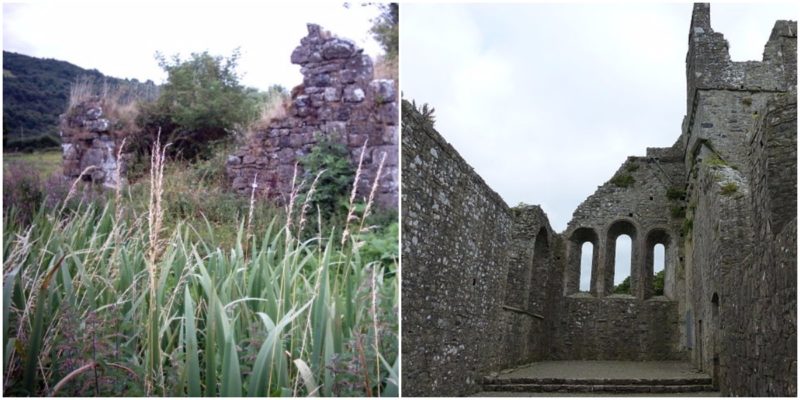When the mind is silent, man begin to hear God’s words. This is probably the main reason why all of the monasteries were built in isolated and remote locations far away from the noise of civilization.
Man can finally hear the beat of his own heart in a place surrounded only with the song of birds, the sound of the wind and the smell of the flowers.

Throughout our history, monasteries have been built in such peaceful places. Some of them survived the passing of the time and the changing of politic and socioeconomic conditions, while others were abandoned and fell into decline.

The remains of Fore Abbey can be found in a green valley on the outskirts of the small and quiet village of Fore in County Westmeath, Republic of Ireland. Historic documents reveal that an ancient monastery was founded here by St. Féichín (pronounced fe-heen) in 630. He was a man of a magnificent faith, who had a great impact in the whole region. His life was dedicated to spreading the Irish monastic tradition and St. Féichín became a crucial part of Irish folklore.

Some of the tales of the miraculous life of St. Féichín are known as the Seven Wonders of Fore. Dedications to his miracles are visible around the monastery’s ruins. It is also believed that more than 300 monks and 2000 students were attracted in the tranquil valley to find peace and to follow the path of St. Féichín. He died in 665 during the epidemic of a yellow plague and after his death the monastery started to fall apart.

In the following centuries the monastery was 12 times burnt to the ground by invaders. And each time it was reborn from the ashes. The oldest surviving structure is St. Féichín Church from the 9th century, believed to be built on the grounds of an earlier church. The biggest resurrection of the place happened at the end of the 12th century, when Hugh de Lacy, the Norman landlord of Meath, decided to construct a Benedictine monastery around the old church.

During the 13th century residential structures were built, which were several times enlarged, and the southeast gatehouse was built. The gatehouse served as a residence and in the next centuries was several times rebuild. The Benedictine monastery was dedicated to St. Féichín and St. Taurin, an abbot of a Benedictine monastery from the city of Evreux in Normandy, France. Because of its strong connections with the monks of France, Fore Abbey was seen as enemy property and threat for the English Crown. The monastery was often occupied by the English rulers when France and England were at war.

In the 14th century parts of it were destroyed, but in the 1430s the monastery was completely reconstructed. In this period two fortified towers were built. One tower was erected on the western side of the property and another on the south side. The second tower for few years served as a residence. Little by little, Fore Abbey started to look more like a fortress than a religious complex.

In 1539 the last Prior, William Nugent, surrendered to the English King Henry VIII. The king didn’t kill him, but he ordered the abbey to be destroyed. The soldiers demolished much of it and took the precious things from there. Since then it has been deserted and left in ruins.

Now at the site can be seen the ruins of the monastery, but also the cell which was occupied by hermits during the 17th century and remains of a structure that served as a pigeon house. There can also be seen the ruined St. Féichín’s Mill, which legend says was built on a place without water, but the prayers of St. Féichín made a miracle and the water started to flow. Near the abbey, spread out in a radius of approximately 6 miles, stand 18 Fore crosses. The Fore Abbey ruins are the only remains of a Benedictine Abbey in Ireland and definitely the site is a real precious pearl hidden in the green valley.
